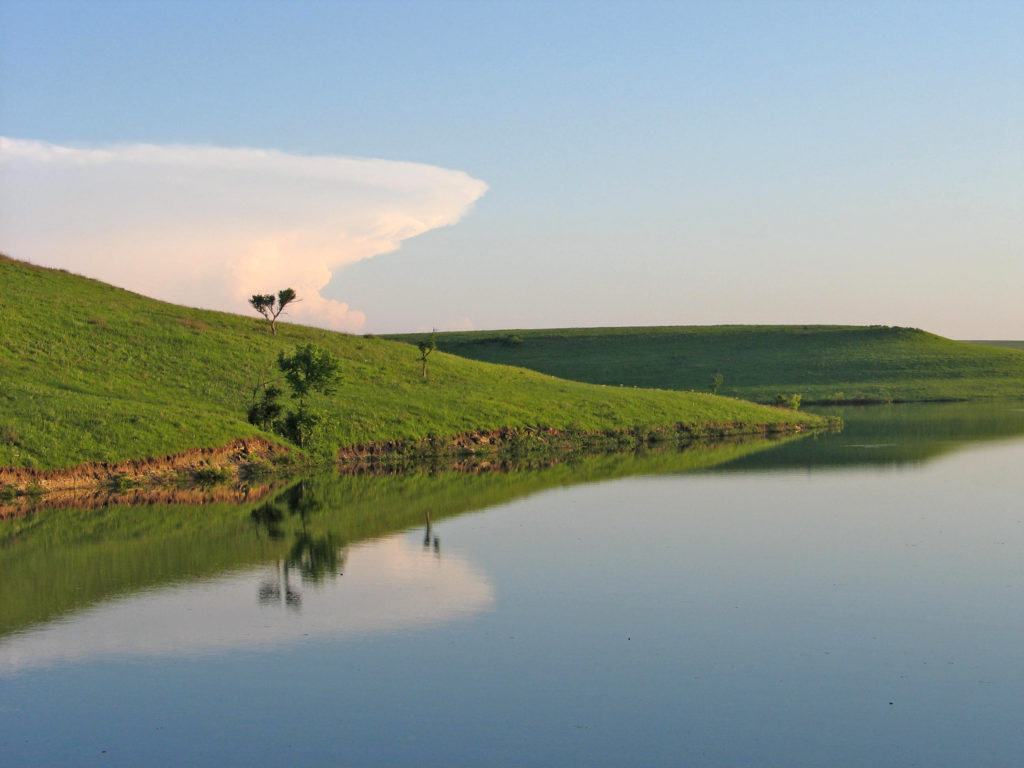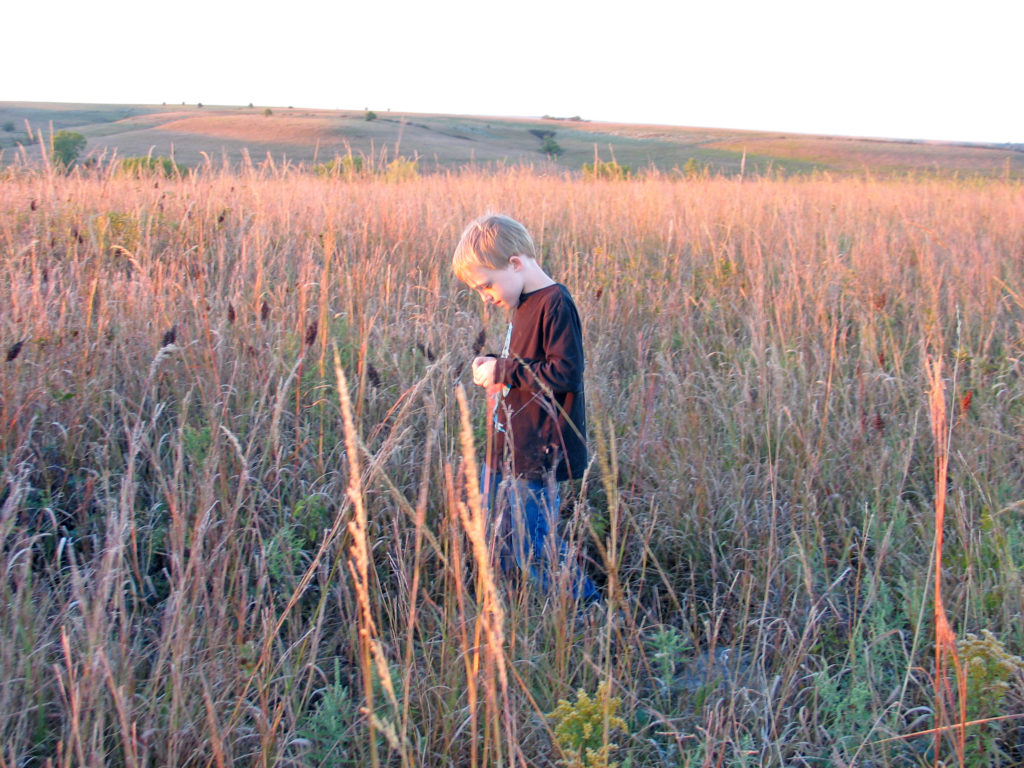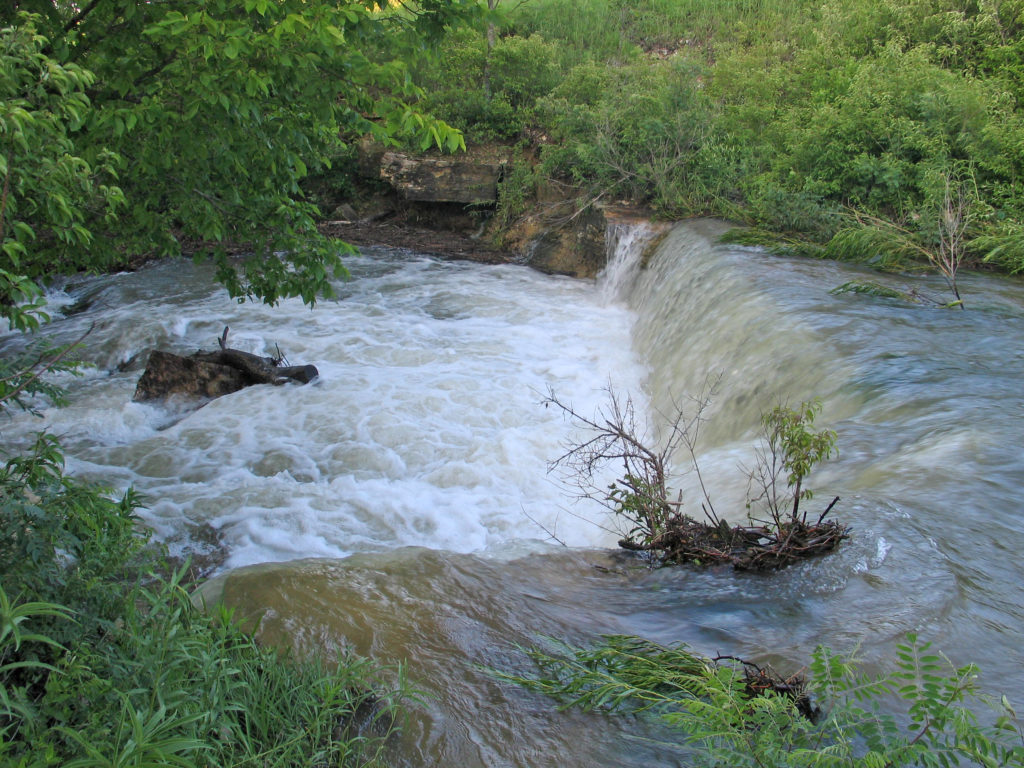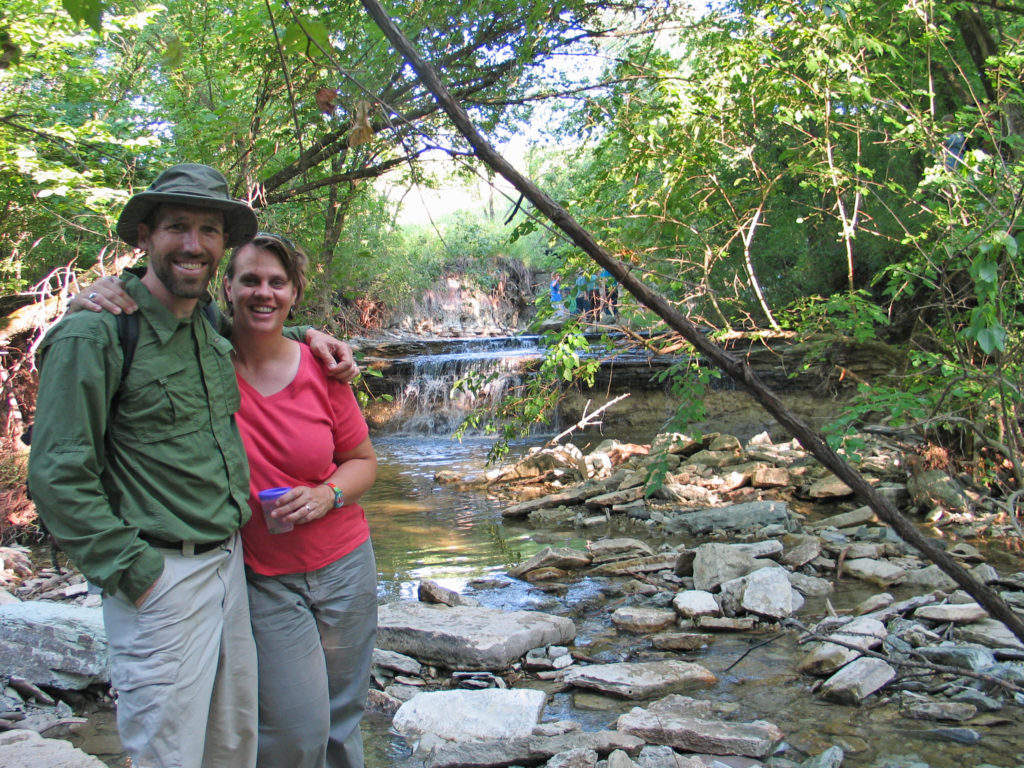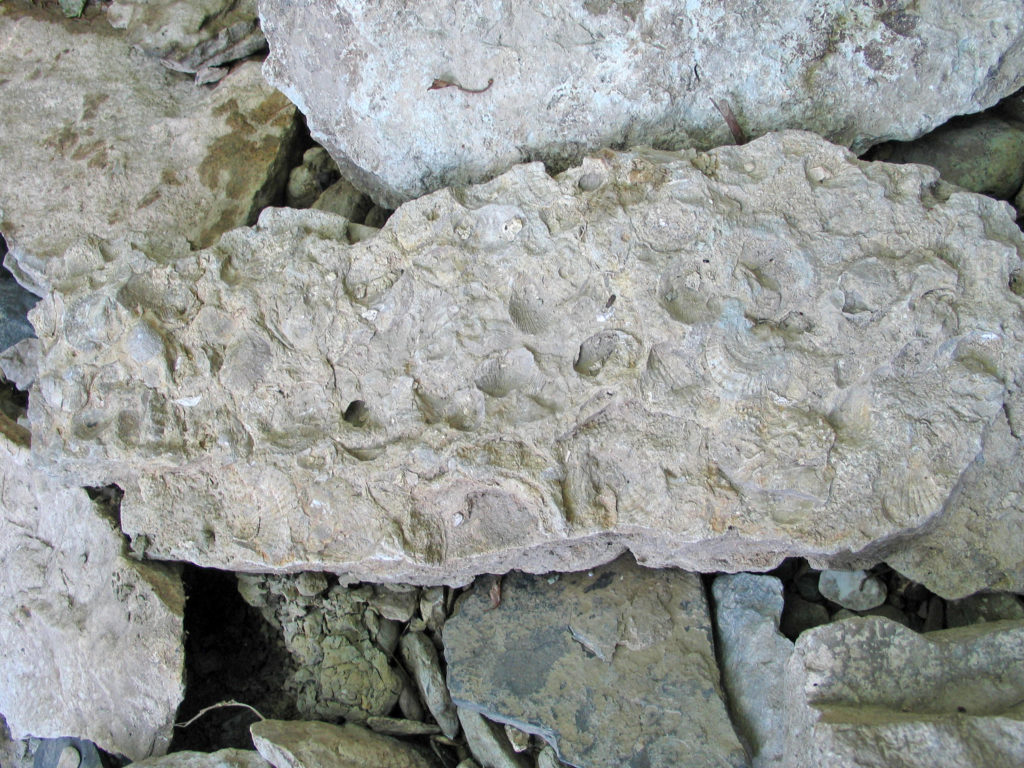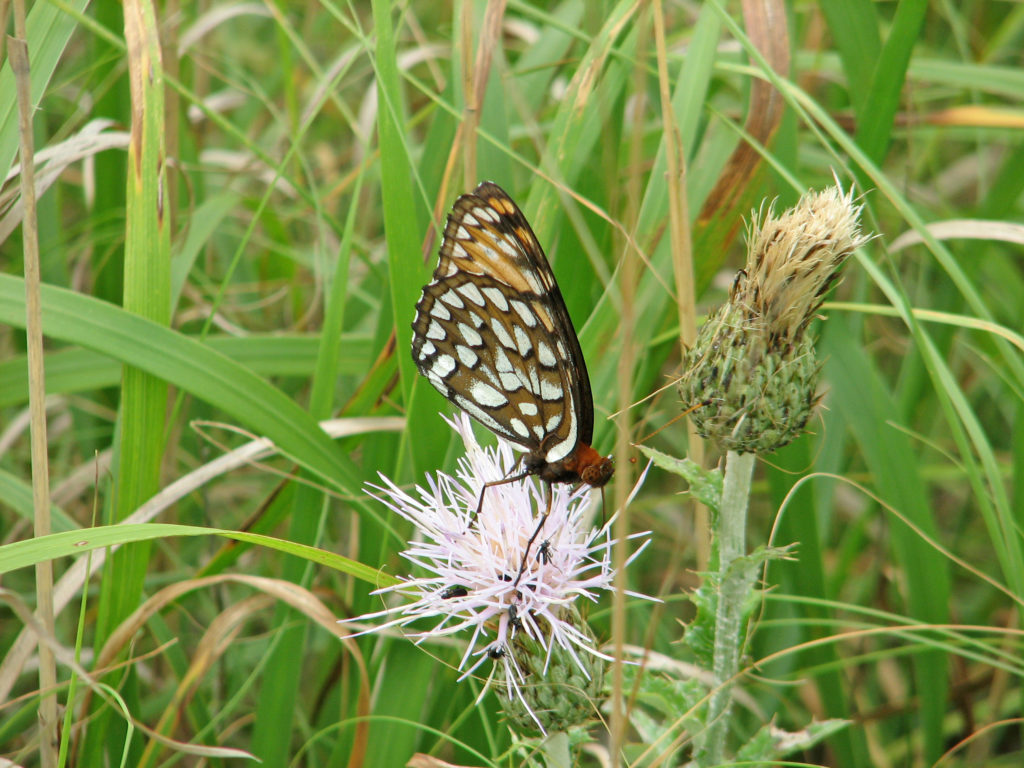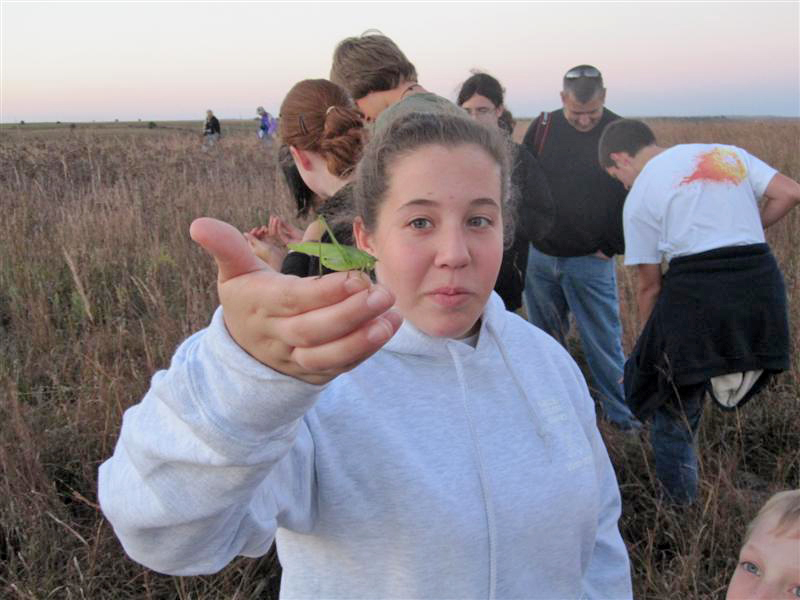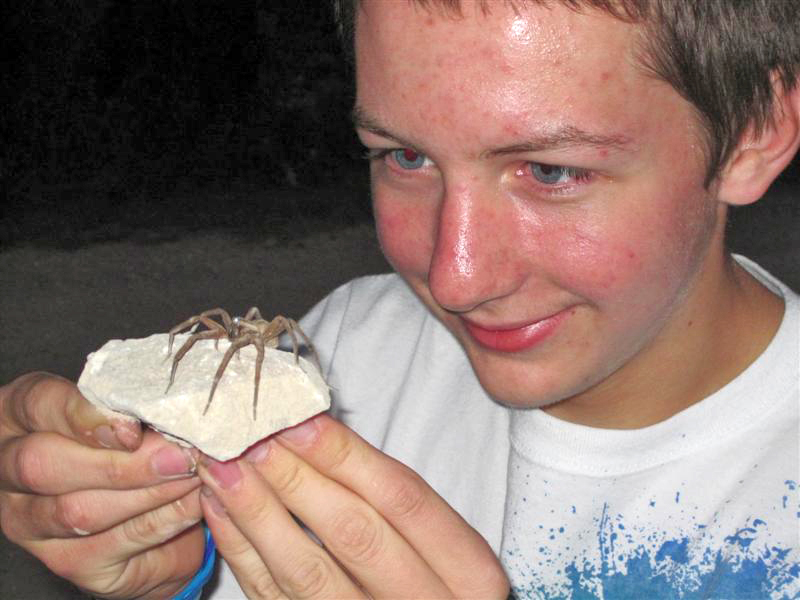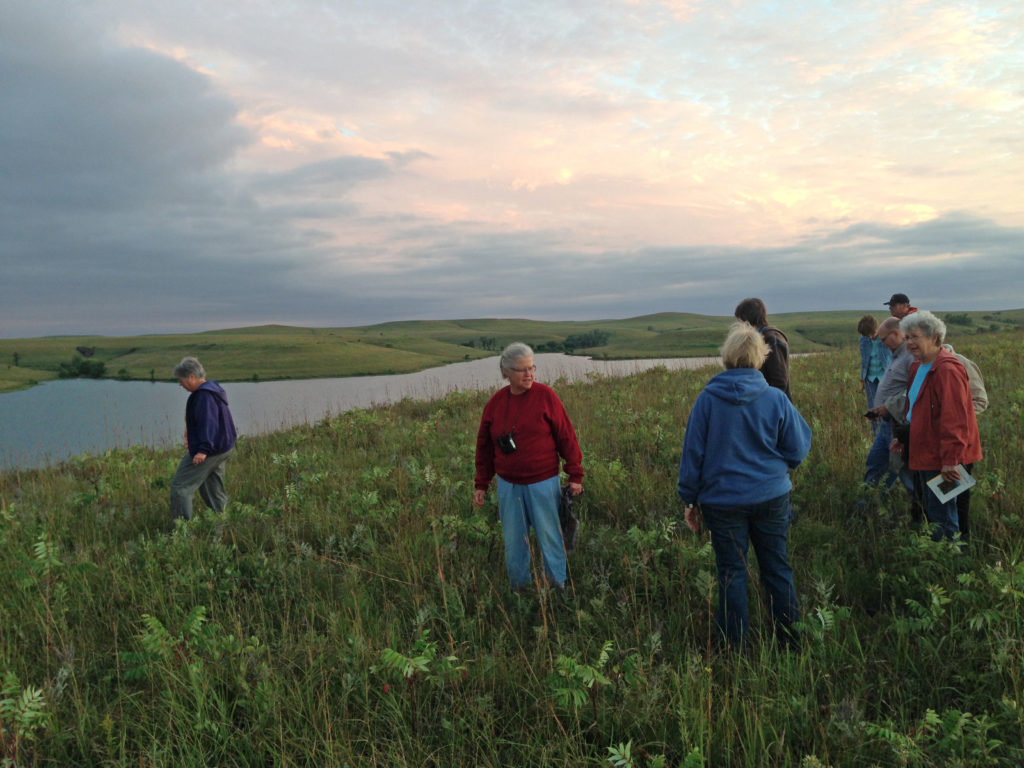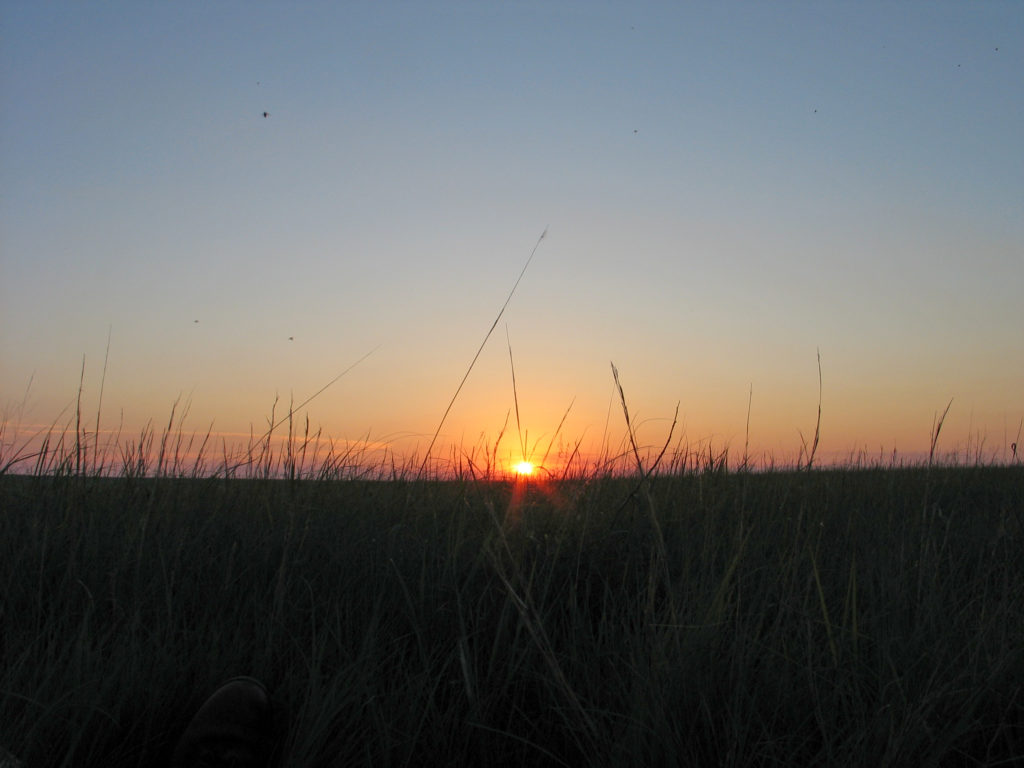June is almost here and it is time for the prairie to shine. The prairie gardens we promote in our urban landscapes feature many prairie elements that start to look really nice this time of the year as well, but sometimes it is most enjoyable to visit the source prairies. One of the best locations to do this in Kansas is the Flint Hills physiographic region and specifically, Chase State Fishing Lake (CSFL).
I’ve probably been there at least a couple of dozen times in the last 15 years and have found something new and fascinating each time. Years of seed collecting for our Dyck Arboretum prairie reconstruction introduced me to this place, and subsequent trips have had me return with Arboretum members, interns, family and friends as I seek to share this unique Kansas gem with as many people as possible.
CSFL has its human-made construction marks, including the access road, dam, reservoir and spillway. These amenities promote easier access and recreation opportunities including camping, fishing, and swimming. The spillway highlights a series of limestone shelves where, during times of higher water flow, cascading waterfalls are a powerful sight to see. During low flow times, the shady dripping falls and clear shallow pools are a delightful destination during a hot summer day. There is nothing like a watershed made up entirely of prairie to provide a reservoir of pristine water for fishing and swimming.
The lake edge is a great location to witness the history of this place dating back to Permian Period 252 to 299 million years ago. The Permian limestones contain abundant weathering resistant chert (or flint). During seed collection forays, my boys in their younger years would spend hours looking for fossils lakeside (like crinoids and brachiopods) and I have to smile when I occasionally find crinoids around the house from their collections.
The wildlife is plentiful at CSFL. I don’t typically spend much time seeking it out during visits, but the diverse prairie ecosystem is teeming with insects, spiders, mammals, reptiles, and birds. Even though wild populations of bison are gone from the Flint Hills, evidence of buffalo wallows from hundreds and even thousands of years ago are still visible as small round compacted wetlands on the prairie ridge tops. It wasn’t till after a number of trips there that an accompanying herpetologist friend turning over rocks while I was collecting seed, alerted me to the fact that a diverse world of snakes and scorpions could be found under foot if you just look for it.
A focus of mine during some visits has been documenting prairie birds and butterflies. Bird species such as upland sandpipers and Henslow’s sparrows and butterfly species such as arogos skippers and regal fritillaries may have become rare throughout the Great Plains in general, but these species still thrive in the expansive prairies of the Flint Hills.
The crown jewel of CSFL, in my opinion, is the prairie vegetation. Hundreds of species of grasses, wildflowers, sedges, vines, shrubs, and trees makeup the diverse skin and lifeblood of this Flint Hills landscape. Searching out flowers and seeds of these species is a like a deluxe scavenger hunt from March to November. A good reason to visit in early to mid June is to enjoy the stunning shows of butterfly milkweed (Asclepias tuberosa) among dozens of other species blooming at the same time.
Finally, there is no better place to take in the grandeur of the relationship between the land and the sky. I’ve been fortunate to watch a thunderstorm roll in at CSFL and I can only imagine what it is like to witness a prairie fire there. With few to no trees to impede your view of the horizon, a ridge top there is an exquisite place to watch the sun rise and set. With only the sound of the wind and the dickcissels, meadowlarks, and grasshopper sparrows to serenade your visit, I find it one of the most enjoyable and even spiritual natural places in Kansas.
For a later blog post by Brad on following the inspirations of Chase State Fishing Lake for landscaping, go to https://dyckarboretum.org/a-flint-hills-visit-inspiration-for-native-landscaping/.

